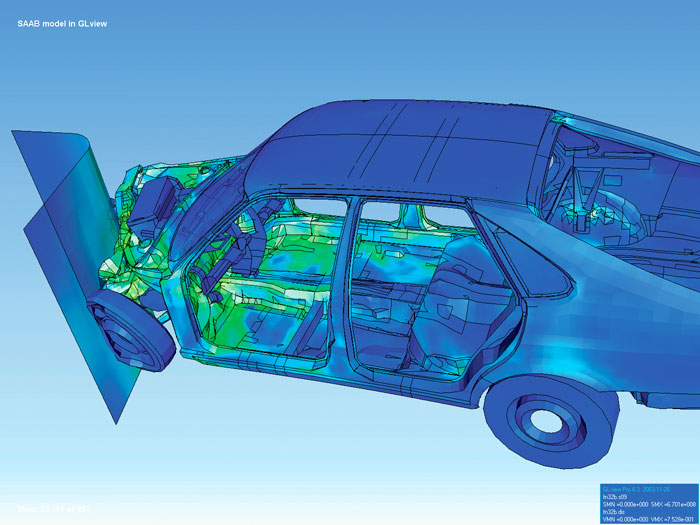|
Finite Element Model Data Post-processing
Finite element model data post-processing is a paradigm for transforming the often highly detailed and complex outputs of Finite Element Method (FEM) calculations into a format that is easily understood by the user. The outputs from post-processing may be used in engineering judgements or analysis, as part of validity/functionality checks on the FEM model, or for the purpose of reporting results. Post processing of finite element data generally requires additional software or programming to specify how the data is to be transformed or presented.J.Y.Lee and S-Y.AhInteractive visualization of elasto-plastic behavior through stress paths and yield surfaces in finite element analysis Finite Element in Analysis and Design, 47(2011), pp496-510 This software may include checks on the codes and standards to which the model must comply e.g. thcheck of panel stiffened structures Using this software can be considered part of the knowledge-based engineering Knowledge-based engineering (KBE) ... [...More Info...] [...Related Items...] OR: [Wikipedia] [Google] [Baidu] |
Finite Element Method
The finite element method (FEM) is a popular method for numerically solving differential equations arising in engineering and mathematical modeling. Typical problem areas of interest include the traditional fields of structural analysis, heat transfer, fluid flow, mass transport, and electromagnetic potential. The FEM is a general numerical method for solving partial differential equations in two or three space variables (i.e., some boundary value problems). To solve a problem, the FEM subdivides a large system into smaller, simpler parts that are called finite elements. This is achieved by a particular space discretization in the space dimensions, which is implemented by the construction of a mesh of the object: the numerical domain for the solution, which has a finite number of points. The finite element method formulation of a boundary value problem finally results in a system of algebraic equations. The method approximates the unknown function over the domain. The ... [...More Info...] [...Related Items...] OR: [Wikipedia] [Google] [Baidu] |
Knowledge-based Engineering
Knowledge-based engineering (KBE) is the application of knowledge-based systems technology to the domain of manufacturing design and production. The design process is inherently a knowledge-intensive activity, so a great deal of the emphasis for KBE is on the use of knowledge-based technology to support computer-aided design (CAD) however knowledge-based techniques (e.g. knowledge management) can be applied to the entire product lifecycle. The CAD domain has always been an early adopter of software-engineering techniques used in knowledge-based systems, such as object-orientation and rules. Knowledge-based engineering integrates these technologies with CAD and other traditional engineering software tools. Benefits of KBE include improved collaboration of the design team due to knowledge management, improved re-use of design artifacts, and automation of major parts of the product lifecycle. Overview KBE is essentially engineering on the basis of knowledge models. A knowledge mo ... [...More Info...] [...Related Items...] OR: [Wikipedia] [Google] [Baidu] |
